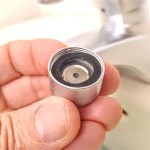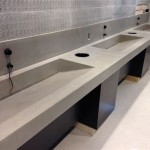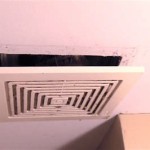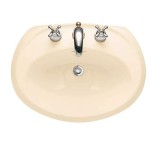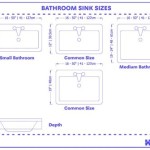Installing Bathroom Faucet Water Lines: A Comprehensive Guide
Installing bathroom faucet water lines is a common plumbing task often undertaken during faucet replacement or new bathroom construction. A proper installation ensures a leak-free and efficient water supply to the faucet. Incorrect installation can lead to water damage, wasted water, and costly repairs. This guide provides a detailed overview of the necessary steps, tools, and considerations for installing bathroom faucet water lines.
Before commencing any plumbing work, it is crucial to prioritize safety. The first step is to shut off the water supply to the bathroom. Typically, shut-off valves are located under the sink, directly on the supply lines leading to the faucet. If these valves are not present or are malfunctioning, the main water shut-off valve for the entire house must be turned off. This is usually located in the basement, garage, or near the water meter. Confirm that the water is completely shut off by opening the existing faucet and observing that no water flows.
Gathering the necessary tools and materials is the next critical step. A comprehensive toolkit will ensure a smooth and efficient installation. Essential tools include adjustable wrenches (two are often needed), a pipe wrench (for stubborn connections), Teflon tape (also known as plumber's tape), a bucket, a basin wrench (for difficult-to-reach nuts), and a flashlight. The specific materials required will depend on the type of faucet and the existing plumbing. Common materials include flexible supply lines (also known as faucet connectors), compression fittings, pipe joint compound (optional, but recommended for threaded connections), and possibly new shut-off valves if the existing ones are corroded or damaged.
Bathroom faucets typically come with two water lines: one for hot water and one for cold water. Understanding the existing plumbing configuration is essential before beginning the installation. Note the type of connections used (compression, threaded, or push-fit) and the diameter of the pipes. If the existing shut-off valves are not in good working order, now is the opportune time to replace them. Installing new, reliable shut-off valves provides greater control over the water supply and simplifies future maintenance or repairs.
Key Point 1: Preparing the Existing Plumbing
The preparation phase is paramount to a successful installation. This involves several crucial steps, beginning with disconnecting the old faucet and water lines. Place a bucket under the sink to catch any residual water in the lines. Using adjustable wrenches, carefully loosen the connections between the old supply lines and the faucet tailpieces (the threaded stems extending from the faucet). It's often helpful to use two wrenches – one to hold the faucet tailpiece steady and the other to turn the supply line fitting. This prevents unnecessary stress on the faucet and minimizes the risk of damage.
Once the supply lines are disconnected from the faucet, disconnect them from the shut-off valves. Again, use two wrenches to stabilize the valve and prevent twisting. Inspect the shut-off valves for any signs of corrosion or damage. If the valves are difficult to turn or show signs of leaks, it is highly recommended to replace them. Replacing the valves now will save potential headaches and costly repairs down the line.
After disconnecting the old faucet and water lines, thoroughly clean the area around the sink and the shut-off valves. Remove any old Teflon tape or pipe joint compound from the threads. Use a wire brush or a plumbing brush to clean the threads and ensure a clean, smooth surface for the new connections. A clean surface is essential for creating a watertight seal.
Inspect the faucet tailpieces for any debris or damage. If necessary, gently clean the tailpieces with a mild abrasive cleaner. Ensure that the threads are clean and free of any obstructions. If the tailpieces are damaged, consider replacing the entire faucet. Damaged tailpieces can be difficult to seal and may lead to leaks.
Finally, measure the distance between the shut-off valves and the faucet tailpieces. This measurement will determine the length of the new supply lines required. It is always better to err on the side of caution and purchase slightly longer supply lines than shorter ones. Excess length can be easily looped or coiled, while short supply lines may require extensions, which can introduce additional leak points.
Key Point 2: Connecting the New Supply Lines to the Faucet
With the existing plumbing prepared and the new supply lines selected, the next step is to connect the supply lines to the faucet tailpieces. Before making any connections, apply Teflon tape to the threads of the faucet tailpieces. Wrap the tape clockwise (as viewed from the end of the thread) around the threads, overlapping each wrap. Apply three to four layers of Teflon tape to ensure a good seal. Alternatively, pipe joint compound can be used in conjunction with Teflon tape, or on its own. However, Teflon tape is generally preferred for its ease of use and clean application.
Carefully thread the supply line fittings onto the faucet tailpieces. Tighten the fittings by hand until they are snug. Then, using two adjustable wrenches, tighten the fittings further. One wrench should hold the faucet tailpiece steady, while the other wrench tightens the supply line fitting. Avoid overtightening the fittings, as this can damage the threads or the faucet tailpiece. A good rule of thumb is to tighten the fittings until they are snug and then give them an additional quarter turn.
Ensure that the supply lines are not kinked or twisted. Kinks and twists can restrict water flow and may eventually lead to leaks. If the supply lines are too long, gently loop them behind the sink, ensuring that they do not interfere with any other plumbing components or cabinet space. Secure the looped supply lines with zip ties or clips to prevent them from moving around.
After connecting the supply lines to the faucet, visually inspect the connections for any signs of leakage. If any leaks are observed, carefully tighten the fittings slightly more. If the leaks persist, disconnect the supply lines, reapply Teflon tape or pipe joint compound, and reconnect the fittings. It is crucial to achieve a watertight seal at this stage to prevent future water damage.
For faucets with push-fit connections, ensure the tailpipes are clean and free from burrs. Push the supply line firmly onto the tailpipe until it clicks into place. A slight tug will confirm that the connection is secure. These connections generally don't need Teflon tape, but always follow the manufacturer's installation guidelines.
Key Point 3: Connecting the Supply Lines to the Shut-Off Valves and Testing for Leaks
The final step involves connecting the supply lines to the shut-off valves. Ensure the shut-off valves are in the "off" position before making the connections. Apply Teflon tape to the threads of the shut-off valve outlets, similar to the process used for the faucet tailpieces.
Carefully thread the supply line fittings onto the shut-off valve outlets. Tighten the fittings by hand until they are snug. Then, using two adjustable wrenches, tighten the fittings further. Again, avoid overtightening the fittings. A good rule of thumb is to tighten the fittings until they are snug and then give them an additional quarter turn.
Once all connections are made, slowly turn on the shut-off valves. Inspect all connections for any signs of leaks. Pay particular attention to the connections at the faucet tailpieces and the shut-off valve outlets. If any leaks are observed, carefully tighten the fittings slightly more. If the leaks persist, disconnect the supply lines, reapply Teflon tape or pipe joint compound, and reconnect the fittings.
After confirming that there are no leaks, run the faucet for a few minutes to flush out any debris or air from the water lines. Check the water temperature and pressure to ensure that both hot and cold water are flowing properly. If the water pressure is low, check the shut-off valves to ensure that they are fully open.
Continue to monitor the connections for leaks for several hours after the installation is complete. Even small leaks can cause significant water damage over time. If any leaks are detected, immediately shut off the water supply and address the issue. In some cases, a slight tightening of the fittings may be sufficient to stop the leak. In other cases, it may be necessary to replace the supply lines or the shut-off valves.
Properly dispose of all old plumbing components and packaging materials. Keep the area under the sink clean and organized. Consider placing a leak detector under the sink to provide early warning of any future leaks.
Finally, document the installation. Keep a record of the dates, materials used, and any specific issues encountered. This documentation can be helpful for future maintenance or repairs. Consider taking photographs of the installation for reference. This will also prove useful for insurance purposes should any water damage occur in the future.
Sink Faucet Water Supply Line Replacement Ifixit Repair Guide

How To Connect Faucets With Supply Tubes The Home Depot
Sink Faucet Water Supply Line Replacement Ifixit Repair Guide

How To Connect Faucets With Supply Tubes The Home Depot

How To Connect Faucets With Supply Tubes The Home Depot

Replace Bathroom Sink Water Supply Lines

How To Connect Faucets With Supply Tubes The Home Depot
Sink Faucet Water Supply Line Replacement Ifixit Repair Guide

How To Install A Bathroom Vanity Hook Up The Faucet And Backsplash Diy Step By

How To Connect Faucets With Supply Tubes The Home Depot
Related Posts
